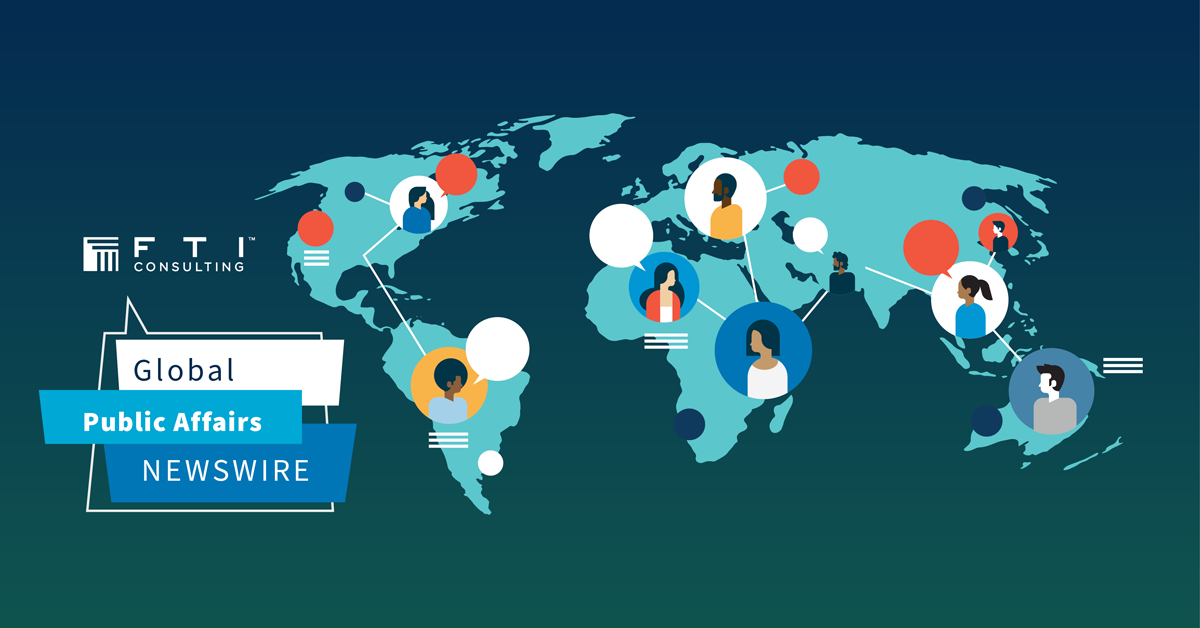How Should You Be Calming Your People?
The 10 Questions Every Employer Needs to Answer
Global health organizations, governments and financial markets are reeling from the onset of a novel strain of Coronavirus. At present, the virus has been detected in over 127 countries, with this number likely to rise.
As world leaders and the scientific community grapple with COVID-19, people are trying to balance their daily lives with concerns about risks to themselves and their loved ones. All over the world, individuals are worried that they are potentially putting themselves in harm’s way in their daily commutes to shared workspaces or that their workplace will temporarily close, leaving them without income for an indefinite period. So how should companies respond to the questions being asked by their employees?
FTI Consulting has been advising numerous organizations across the globe that have been managing the impact from COVID-19. Based on our experience, below is a list of the most prevalent questions that all organizations must answer quickly to reassure their employees and to help maintain business continuity in the face of the evolving pandemic.
1. How is the organization monitoring the situation, and who is making decisions for us?
DO
Establish a clear governance structure for monitoring information from health authorities, gathering organization-specific data and making key decisions, and ensure that all decision makers are aware of their accountabilities. You should be able to identify the leaders and teams who are leading your organization’s response and detail how they are supporting business continuity and reducing employee risk.
DO NOT
Refer employees to any internal contacts without briefing these contacts about how they should respond to employee questions about COVID-19. Do not assume they are aware of current crisis protocols. Instead be sure they understand how current processes may evolve and have opportunities to contribute to the process, as appropriate.
2. How will we receive updates if we are not in the office or able to access the company network?
DO
Be explicit with employees about how they will receive information from you throughout this situation. Consider what new channels may be necessary to reach employees who either do not have company email accounts or will not be able to access them remotely. As needed, begin the process of collecting employee phone numbers and/or email addresses, building new platforms or educating employees about the channels that are accessible to them remotely.
DO NOT
Rely on one channel. Ensure you have multiple ways of reaching your people and that you are testing these now. Organizations that are slow to ensure a broad approach to keeping employees connected will likely face the most challenges if they are forced to suspend onsite operations.
3. When do emergency systems/protocols kick in?
DO
Be clear with employees about your company’s situation; how you’re assessing risk and how they can be prepared as the situation unfolds. Many organizations have already moved to work from home arrangements — and broader shutdowns affecting hourly employees are now beginning. If you anticipate major business disruptions, ensure your people understand the process you are using to make decisions and, if the time comes to further suspend operations, be sure they receive information from you first.
DO NOT
Predict to your staff how this will play out. The media overflow on this story is immense, and it’s not your role to decipher it. What your people need from you is an understanding of how the business is responding and the provisions it is putting in place to help employees balance their work responsibilities and manage their personal risk.
4. What is the relationship between what we hear from local health authorities and what we hear from the company? Which do we follow?
DO
Reinforce to employees how national and local guidance from public health authorities aligns with your business practices. Link directly to relevant resources — such as the Centers for Disease Control and Prevention (CDC) and the World Health Organization (WHO) — and affirm your alignment with the recommendations published by these organizations.
DO NOT
Waste time repeating all information that is available from other sources. Focus on communicating what employees need to know from the organizational perspective.
5. As a leader, how do I reassure my people?
DO
Reiterate your organization’s plan for business continuity and managing risk. Engage your people in solutions for customer or client support as needed. Be empathetic, focusing on individualized coaching and feedback. Recognize employee concerns and prioritize detailing what COVID-19 means for employee health and safety policies; personal and family health insurance; sick leave and sick pay. Overcommunicate with employees using a range of channels, including those on leave or who are new to the organization. Focus on physical and emotional wellbeing to optimize resilience and provide a support network. Encourage employees to connect (remotely) with their colleagues regularly on business matters but also on a personal level.
DO NOT
Attempt to communicate all COVID-19 updates and news or inadvertently amplify rumors or misinformation. Be consistent about the sources that you cite, and ensure all communication is calm, balanced and factual.
6. Is the C-Suite worried?
DO
Consider the behaviors of your leadership team in response to the crisis. Leadership behavior and tone carries weight, particularly because company leadership is the most trusted source of information for many employees. Your people will expect the C-Suite to cascade authoritative, informative communications and have detailed contingency planning. Leaders who are accustomed to having a strong physical presence with their teams will need to adapt to leading remotely in those organizations where physical locations are closed and teams are working remotely.
DO NOT
Appear absent – ensure that routine meetings and business continue to the extent possible.
7. What is the company doing to protect us?
DO
Clearly lay out the steps your company is taking to reduce the health risk to employees and other stakeholders, as well as the business risks to the organization. If internal policies change – whether they relate to HR, IT, travel or external office visitors – make this known immediately. Remind employees of new organizational risks as you identify them (e.g., recent reports in the Wall Street Journal that criminals are using the threat of the virus to spread criminal malware).
DO NOT
Overload your people with information. Clarity and precision are key, so prioritize the areas where employees need to be vigilant.
8. What can we do to protect ourselves?
DO
Clearly communicate your health and safety, travel, and business continuity policies to all employees and be an example by following your policies. Ensure employees are empowered to make the decisions that best help them manage risk for themselves and their families and feel supported in doing so. Lead by example in following guidelines from major health organizations such as the CDC and WHO on how to protect yourself and others.
DO NOT
Overload your employees with guidance that can otherwise be found from the various public health outlets. Instead, rely on links to these trusted sources.
9. Will I know if a colleague becomes sick?
DO
Err on the side of protecting public health by sharing information openly and honestly — but be sure you are acting on facts and protect the personal information of the infected individual or individuals. Once the organization becomes aware of a potential issue, it must act with urgency, but take the time necessary to confirm symptoms and, as applicable, the advice provided by a medical professional. Share that information promptly with employees. If there is reasonable concern an infected individual has been onsite, move quickly to close the facility and provide clear guidance and support to those immediately affected on what actions are expected of them, including quarantine if necessary. Communicate steps taken to sanitize the site before reopening.
DO NOT
Disclose the identity of anyone infected. While you will want to give other employees as much specificity as possible about their potential risk, it is critical that you protect the privacy of the person affected.
10. What are the policies around sick pay?
DO
Recognize that the actions of some employees, whether ill or healthy, will be directed by the way their income is affected. Be sure you are very clear on your organization’s stance toward sick pay and any temporary measures you may introduce to make it easier for employees to stay home if they are sick or fear they may be at risk.
DO NOT
Reinforce policies that encourage staff to come to work if they are ill — whether that’s through direct communications, the examples set by leadership, or the additional pressure placed on teams to perform during this challenging period. If not done so already, companies should review their sick pay measures and policies relative to this pandemic and adjust them as necessary.
In Summary: Engaging Employees in the Midst of COVID-19
Put health and safety first, always. While business continuity is important, it must be clear that the organization will not take unnecessary risks to keep its doors open or protect the bottom line at the expense of employee health and wellbeing.
Give context and be transparent with timely information about the current state. Jumping straight to policy updates leaves recipients to speculate about what prompted the communications – and in this environment, they’ll jump to the worst-case scenario. Confirm where you are before explaining where you’re going.
Be specific about the actions the company is taking – but keep it in the present tense. Whether you’re announcing enhanced hygiene practices, contingency plans or the impacts of a location shutdown, you will not earn trust with vague generalities or predictions about the future. You will not keep it without acknowledging that policies will evolve along with the situation.
Ensure decisions are properly vetted before they are communicated. Well-intentioned efforts to get information to stakeholders quickly can inadvertently miss key implications, creating problems down the road. Create a coordinated working group, including Health and Safety, HR, Operations, Commercial Leadership, Supply Chain, Legal, Finance and Communications to effectively think through all the angles.








